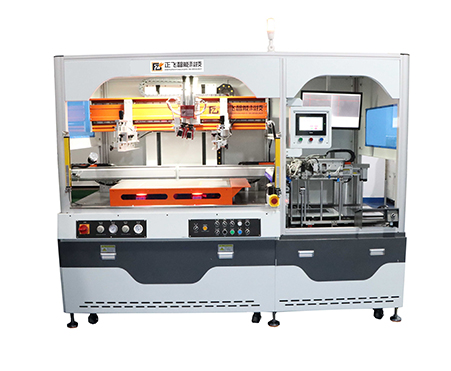
The cost of consumables for automatic screen printing machines cannot be generalized. It is influenced by a combination of multiple factors and needs to be analyzed from aspects such as the usage of major consumables like ink, screen plates, and scrapers, as well as the characteristics of the equipment itself.
Ink is one of the consumables that consume a large amount in the screen printing process. The prices of different types of inks vary significantly. For instance, the price of ordinary solvent-based inks is relatively low, ranging from tens to hundreds of yuan per kilogram. UV ink, due to its advantages such as fast drying speed, strong adhesion and environmental friendliness, usually has a relatively high price, which may reach hundreds of yuan or even more per kilogram. In addition, the consumption of ink is also related to the complexity of the printed pattern, the size of the printed area, and the coverage rate of the ink. If the printed patterns are fine or large solid color patterns, the consumption of ink will be relatively high and the cost will increase accordingly. However, through reasonable design and process optimization, such as adopting reasonable screen mesh count and printing pressure, the amount of ink used can be controlled and the cost of ink can be reduced. Some automatic screen printing machines are equipped with advanced ink supply systems, which can control the flow of ink, further reduce waste, and thereby lower ink costs to a certain extent.

The screen version is also an important consumable. The material, mesh count and size of the screen will all affect its price and service life. Generally speaking, the price of high-quality imported screens is slightly higher than that of domestic ones, but their durability and printing effect may be better. The service life of the screen depends on factors such as the number of prints, printing pressure, and the corrosiveness of the ink. If the operation during the printing process is improper, such as excessive printing pressure or impurities in the ink, it will shorten the service life of the screen plate, increase the frequency of screen plate replacement, and thereby raise the cost. However, through correct operation and regular maintenance, such as timely cleaning of the screen after printing and avoiding scratches from sharp objects on the screen, the service life of the screen can be prolonged and the cost of consumables can be reduced. Some advanced automatic screen printing machines also have the function of automatically cleaning the screen plates. This not only ensures the cleanliness of the screen plates but also reduces the errors caused by manual cleaning, further extending the service life of the screen plates.
The scraper is also a consumable that cannot be ignored. The main materials of scrapers include rubber and polyurethane, etc. Scrapers made of different materials have different prices and performances. Polyurethane scrapers have the advantages of good wear resistance and moderate elasticity. They are relatively expensive, but have a long service life. Rubber scrapers are relatively inexpensive, but they have poor wear resistance and need to be replaced more frequently. The degree of wear of the scraper is related to the printing pressure, printing speed and the number of prints. Reasonable adjustment of printing pressure and speed to avoid excessive wear of the scraper can reduce the frequency of scraper replacement and save costs.
The cost of consumables for automatic screen printing machines cannot be simply concluded. Although some high-quality consumables are relatively expensive, through measures such as optimizing the process, correct operation and regular maintenance, the usage and replacement frequency of consumables can be effectively reduced, thereby controlling the cost of consumables.